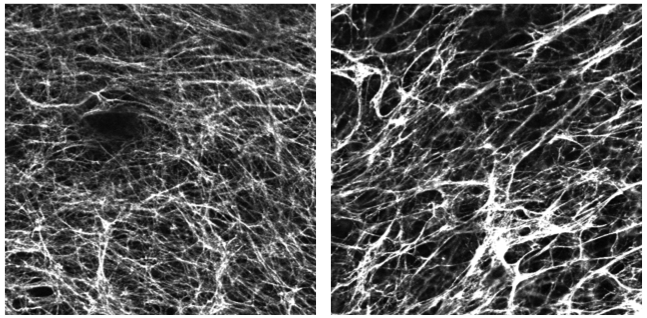Section: New Results
Classification of the extracellular matrix
Participants : Raphael Meunier, Anca-Ioana Grapa, Laure Blanc-Féraud, Xavier Descombes, Sébastien Schaub.
This work is made in collaboration with Ellen Van Obberghen eand Georgios Efthymiou (iBV).
Cells of multicellular organisms interact continually with their local environment which is largely determined by the extracellular matrix (ECM). The biochemical, topological and physical properties (stiffness, elasticity) of the ECM regulate many physiological processes (embryonic development and tissue repair) and their dysregulation plays a key role in the evolution of inflammatory, fibrotic and tumoral diseases. Fibronectin (FN) is a major component of the ECM. The biologists at iBV have identified certain molecular mechanisms involved in the assembly of FN into fibrillar arrays (FN fibrillogenesis) on the cell surface. The resulting fibrillar networks display variable densities and organizations that convey specific biological signals to the cells that encounter them (see figure 6).
We have developed a classification scheme that consists in clustering features extracted from the images to define a texture dictionary. The extracellular matrix are then classified with respect to their signature on this dictionary. We have compared two sets of features that are SIFT histograms and the curvelet coefficients. The SIFT approach appears to be more discriminant for classification purposes but the curvelet approach is better suited for modeling the texture. Next step will consists in modeling the extracellular matrix.


